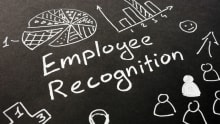Reimagining the north star of your performance and rewards strategy

The impact of COVID-19 on organisations and their people has been unprecedented and has caused many organisations to rethink and evolve their workforce, workplace, and operating model. More than ever, organisations are being challenged to meet the talent demands to support the return to sustainable growth, are under pressure to effectively manage reward and benefits costs, and maximise the return on the overall investment in human capital. In this new world where people are motivated to work for companies that are purpose-led, yet facing a future that is less defined, organisations still need to ensure that their reward and performance framework supports this and remains aligned to strategy. It is therefore critical for organisations to take a fresh look at their total reward and performance strategy to ensure it aligns with any new and evolving workforce strategies. It’s time to reimagine reward.
In this interview with Rahul Vashist, Head- Performance and Rewards- Australia, New Zealand, and Japan, Mondelez, we look at how we can reimagine performance and rewards for the new world of work.
Q. Employers are faced with many challenges in the COVID-19 aftermath. How do HR leaders need to rethink workforce and employee planning, performance, and reward strategies?
The business and talent landscape has been evolving quite rapidly over the last 5 years. Human interactions are being replaced by digital platforms and artificial intelligence has been outcompeting humans in traditional jobs. New business channels have been growing exponentially due to changes in consumer and shopper behaviour. COVID-19 has further accelerated the speed of this change. What we envisaged to be happening 5 years down the line, has become a reality in a span of 6-12 months.
This means that agility in business and people strategies are a necessity. In the new world, ‘Hot skills’ will change even more rapidly and businesses can’t afford to rely solely on traditional workforce models. Businesses will need to find new ways to attract, engage, and inspire talent who will lend a competitive advantage through their differentiated skills. Performance and rewards, and more broadly total employee value proposition for one pool of employees may look very different from another pool working in the same organisation. In short, like our business models, our workforce strategies must be more dynamic, and we must become comfortable with duality in our people processes and systems.
Q. As the pandemic resets workforce trends, how do you think compensation and benefits need to evolve? Are they going to be skill-based rather than traditional performance-based?
A blend of performance and skill-based rewards programs are more likely to exist in the short term. Organisations will continue to have a core workforce group focused on more traditional business models. Total rewards for this group will evolve with greater emphasis on flexibility, health and wellbeing, and pay-equity. However, compensation will continue to be based on the value of their core job and performance for the time being.
On the other hand, we are witnessing a growing pool of agile and contingent workforce across organisations. This pool of high-skilled workers is entrepreneurial and want to shape their own work arrangements. They are unlikely to have a core job in the organisation, and it is only appropriate that we approach their performance and pay differently. This group of on-demand talent expect to be paid based on recognition of their skills and rewarded for the outcome of their projects.
Organisations have no option but to be more open to flexibility in their reward strategies. Understandably though, the rewards strategy of each organisation or job family will need to evolve at a different pace. Businesses and job families with fast-changing critical skills are more likely to transition to a skill-based rewards approach first in comparison to some of the relatively stable industries and job families. And, as leaders and employees get more comfortable with agility in their teams, talent management and rewards practices will evolve accordingly as well.
Q: Given the current environment, how should organizations calibrate their productivity and performance yardsticks? Is there anything that has worked particularly well for Mondelez?
In the current environment, most of us have been working from home and putting our best efforts to be productive. But the harsh reality is that lockdowns and remote work arrangements have impacted each cohort or rather each employee differently. While some employees have effectively managed their time and focus, some have found it to be rather quite challenging.
At Mondelēz International, there has been a call for people managers to be empathetic towards employees as they dealt with the stressors the pandemic has brought on. They have rightly been expected to help teams to prioritise critical projects, eliminate non-value-adding tasks, and help reduce workloads. Nevertheless, it is only fair that performance yardsticks don’t account for personal circumstances or how colleagues approached work-life integration. And, empathy or biases do not inadvertently affect performance differentiation.
Importantly, we have been cognisant that productivity and performance are measured based on the business impact one created instead of how many activities and tasks are completed. It is very much possible that the impact of one business-critical project which someone pivoted to deliver may far outweigh the importance of all the other pre-defined priorities on the objective sheet. In essence, our focus has been outcomes instead of output.
Q: Post pandemic, how can we refine our assessment of employees’ work and the rewards they receive, such that it is a fair and equitable reflection of their contribution to the organisation?
Ensuring fairness and equity in how we assess and reward employees is going to be a key imperative for organisations in the post-pandemic world. A hybrid workforce and workplace is now a reality. However, it is important to note that certain cohorts including Gen Z, women and traditionally underrepresented groups are more likely to opt for remote and flexible working arrangements. While this offers a tremendous opportunity to increase diversity, it will be important for organisations to reshape processes, systems, and the larger workplace culture to enable effective inclusion of employees irrespective of whether they choose to work from the office and/or remotely. Both leaders and employees will be required to make conscious efforts to make everyone feel heard, supported, and recognised for their contribution. The performance will need to be assessed based on results achieved and any predispositions will need to be mindfully eliminated.
At the same time, we also need to be cognizant to not create pay gaps. We need to be conscious that groups who prefer flexibility should not be treated unfairly just because they choose to work part-time, remotely, or as a freelancer. While defining and refining our pay principles is a good starting point and pay audits help to identify and address biases, at Mondelez, we are educating and empowering our people managers to apply principles of fairness and equity to ensure their team’s pay reflects their skills and contribution to the organisation on an ongoing basis, instead of waiting for annual pay reviews.
Q: What should be the key components of the new framework of continuous assessment at a time when everyone is talking about collaboration, innovation, business impact, client success, and new skills?
Stakeholder feedback should constitute the core of a continuous performance assessment system. Business impact is relatively easier to measure and can be captured regularly and at the end of a performance cycle, as numbers speak for themselves. However, collaboration, innovation, and impact on people and teams have to be assessed on a real-time basis. In the hybrid world, where it is difficult to have quick check-ins after every meeting, brainstorming session, or presentation to gauge experience and impact, unplanned conversations must be replaced by short real-time feedback facilitated by user-friendly apps. HR systems that enable both employees and their managers to invite and gather multi-stakeholder feedback on an ongoing basis can help to make performance assessment and development planning more holistic.
Finally, yet importantly, we should not get disillusioned by an increase in individual productivity that we have realised over the last 12-18 months. The importance of collaboration and innovation should not be overshadowed by segregated performance and contributions.
Q: There is an ongoing war of talent which seem to have only intensified in the last 3 months. Our cover story attempts to throw light on the new paradigms of people strategy in the current reality. How would you like to reimagine performance and rewards strategy amid changing business and talent landscape?
Organisations are increasingly keen to recruit elusive unicorns, talent who would imaginatively take the business to the next level. Amidst today’s realities and tomorrow challenges, businesses need to reinvent more flexible workforce models to be able to afford talent with such fast-changing, sought after skills. However, to enable businesses with distinguished skills more sustainably, it is not just the rewards programs that need to be reinvented, the talent strategy needs to be reimagined at a holistic level. As we transition to new workforce models, let us not forget to pay attention to the development and retention of internal talent.
In the new paradigm, the focus of our talent and reward programs should be distorted towards encouraging skill development by enabling fluid talent moves. We have no choice but to reimagine our pay programs to incentivise colleagues for the development and application of differentiated skills beyond traditional role and functional boundaries.
















